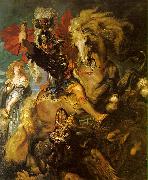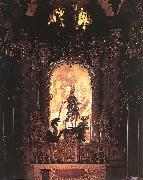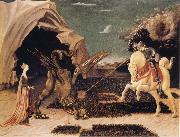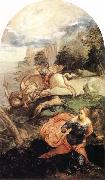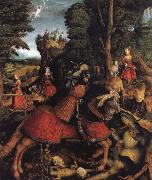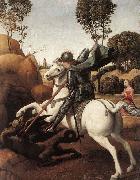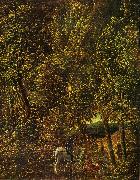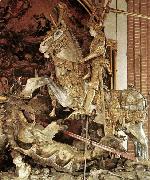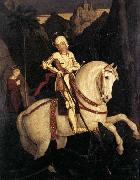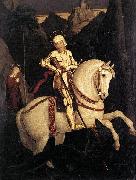Wholesale Oil Painting No Minimum |
|||||||||||
|
|
|||||||||||

|
|||||||||||
|
|
|
||||||||
Peter Paul RubensFlemish Baroque Era Painter, 1577-1640 Peter Paul Rubens (June 28, 1577 ?C May 30, 1640) was a prolific seventeenth-century Flemish Baroque painter, and a proponent of an exuberant Baroque style that emphasized movement, color, and sensuality. He is well-known for his Counter-Reformation altarpieces, portraits, landscapes, and history paintings of mythological and allegorical subjects. In addition to running a large studio in Antwerp which produced paintings popular with nobility and art collectors throughout Europe, Rubens was a classically-educated humanist scholar, art collector, and diplomat who was knighted by both Philip IV, king of Spain, and Charles I, king of England. Rubens was a prolific artist. His commissioned works were mostly religious subjects, "history" paintings, which included mythological subjects, and hunt scenes. He painted portraits, especially of friends, and self-portraits, and in later life painted several landscapes. Rubens designed tapestries and prints, as well as his own house. He also oversaw the ephemeral decorations of the Joyous Entry into Antwerp by the Cardinal-Infante Ferdinand in 1635. His drawings are mostly extremely forceful but not detailed; he also made great use of oil sketches as preparatory studies. He was one of the last major artists to make consistent use of wooden panels as a support medium, even for very large works, but he used canvas as well, especially when the work needed to be sent a long distance. For altarpieces he sometimes painted on slate to reduce reflection problems. His fondness of painting full-figured women gave rise to the terms 'Rubensian' or 'Rubenesque' for plus-sized women. The term 'Rubensiaans' is also commonly used in Dutch to denote such women. |
||||||||
|
|
||||||||
St George and the Dragon
St George and the Dragon Painting ID:: 3649 |
1606-07
Museo del Prado, Madrid 1606-07 Museo del Prado, Madrid |
|||||||
|
|
||||||||
ASAM, Egid QuirinGerman Baroque Era Sculptor, 1692-1750 Sculptor, stuccoist, painter and architect, son of Hans Georg Asam. After working with his father, he was apprenticed to Anton Faistenberger in Munich to learn sculpture. He presumably accompanied his brother Cosmas Damian Asam to Rome (1711-13), where he studied works by Bernini. In 1724 he became a valet and court stuccoist to the Prince-Bishop of Freising and in 1730 a valet to the Elector of Bavaria. |
||||||||
|
|
||||||||
|
|
St George and the Dragon
St George and the Dragon Painting ID:: 32237 |
1721
Gilt stucco 1721 Gilt stucco |
||||||
|
|
||||||||
UCCELLO, PaoloItalian Early Renaissance Painter, 1397-1475 Italian painter, draughtsman, mosaicist and designer of stained glass. His work vividly illustrates the principal issues of Florentine art during the first half of the 15th century. Trained within the tradition of the Late Gothic style, he eventually became a leading exponent of the application of linear perspective based on the mathematical system established by Filippo Brunelleschi and Leon Battista Alberti. It is the merging of these two diametrically opposed tendencies that forms the basis of Uccello's style. As well as painting on panel and in fresco |
||||||||
|
|
||||||||
|
|
St George and the Dragon
St George and the Dragon Painting ID:: 33375 |
mk86
c.1455
Tempera on canvas
57x74cm
London,National Gallery
mk86 c.1455 Tempera on canvas 57x74cm London,National Gallery |
||||||
|
|
||||||||
TintorettoItalian Mannerist Painter, ca.1518-1594 His father was a silk dyer (tintore); hence the nickname Tintoretto ("Little Dyer"). His early influences include Michelangelo and Titian. In Christ and the Adulteress (c. 1545) figures are set in vast spaces in fanciful perspectives, in distinctly Mannerist style. In 1548 he became the centre of attention of artists and literary men in Venice with his St. Mark Freeing the Slave, so rich in structural elements of post-Michelangelo Roman art that it is surprising to learn that he had never visited Rome. By 1555 he was a famous and sought-after painter, with a style marked by quickness of execution, great vivacity of colour, a predilection for variegated perspective, and a dynamic conception of space. In his most important undertaking, the decoration of Venice's Scuola Grande di San Rocco (1564 C 88), he exhibited his passionate style and profound religious faith. His technique and vision were wholly personal and constantly evolving. |
||||||||
|
|
||||||||
|
|
St George and the Dragon
St George and the Dragon Painting ID:: 33501 |
mk86
c.1550-1560
Oil on canvas
157x100cm
London,National Gallery
mk86 c.1550-1560 Oil on canvas 157x100cm London,National Gallery |
||||||
|
|
||||||||
Leonhard BeckGerman Northern Renaissance Painter, ca.1480-1542, Illuminator, painter, draughtsman and woodcutter, son of Georg Beck. He first appears as an illuminator and collaborator with his father in two Psalters for the Augsburg monastery of SS Ulrich and Afra in 1495, producing 35 coloured initial letters for each of them (Augsburg, Staats- & Stadtbib., Cod. 49a). These are vigorously coloured but fairly uniform in character, with small, lively biblical scenes excellently adapted to the letters. Red, green and blue predominate; ochre tones provide a link with the gold ground. The initial letter X is composed of splendidly curled, entwining foliage with birds and half-figures of prophets; the Virgin, Joseph, the Christ Child in the manger and the choir of angels are each enclosed in one of its sectors. The figures are presented in a light, easy manner; the draughtsmanship avoids unnecessary detail. |
||||||||
|
|
||||||||
|
|
St George and the dragon
St George and the dragon Painting ID:: 39712 |
mk150
c.1515
134.5x116cm
mk150 c.1515 134.5x116cm |
||||||
|
|
||||||||
RAFFAELLO SanzioItalian High Renaissance Painter, 1483-1520 Italian painter and architect. As a member of Perugino's workshop, he established his mastery by 17 and began receiving important commissions. In 1504 he moved to Florence, where he executed many of his famous Madonnas; his unity of composition and suppression of inessentials is evident in The Madonna of the Goldfinch (c. 1506). Though influenced by Leonardo da Vinci's chiaroscuro and sfumato, his figure types were his own creation, with round, gentle faces that reveal human sentiments raised to a sublime serenity. In 1508 he was summoned to Rome to decorate a suite of papal chambers in the Vatican. The frescoes in the Stanza della Segnatura are probably his greatest work; the most famous, The School of Athens (1510 C 11), is a complex and magnificently ordered allegory of secular knowledge showing Greek philosophers in an architectural setting. The Madonnas he painted in Rome show him turning away from his earlier work's serenity to emphasize movement and grandeur, partly under Michelangelo's High Renaissance influence. The Sistine Madonna (1513) shows the richness of colour and new boldness of compositional invention typical of his Roman period. He became the most important portraitist in Rome, designed 10 large tapestries to hang in the Sistine Chapel, designed a church and a chapel, assumed the direction of work on St. Peter's Basilica at the death of Donato Bramante, |
||||||||
|
|
||||||||
|
|
St George and the Dragon
St George and the Dragon Painting ID:: 51222 |
1505-06
Oil on wood,
28.5 x 21.5 cm 1505-06 Oil on wood, 28.5 x 21.5 cm |
||||||
|
|
||||||||
Albrecht AltdorferGerman 1480-1538 Albrecht Altdorfer Galleries He most often painted religious scenes, but is mainly famous as the first frequent painter of pure landscape, and also compositions dominated by their landscape. Taking and developing the landscape style of Lucas Cranach the Elder, he shows the hilly landscape of the Danube valley with thick forests of drooping and crumbling firs and larches hung with moss, and often dramatic colouring from a rising or setting sun. His Landscape with footbridge (National Gallery, London) of 1518-20 is claimed to be the first pure landscape in oil. He also made many fine finished drawings, mostly landscapes, in pen and watercolour. His best religious scenes are intense, sometimes verging on the expressionistic, and often depict moments of intimacy between Christ and his mother, or others. His most famous religious artwork is the The Legend of St. Sebastian and the Passion of Christ that decorated the altar in the St. Florian monastery in Linz, Austria. He often distorts perspective to subtle effect. His donor figures are often painted completely out of scale with the main scene, as in paintings of the previous centuries. He also painted some portraits; overall his painted oeuvre was not large. |
||||||||
|
|
||||||||
|
|
St George and the Dragon
St George and the Dragon Painting ID:: 58199 |
St George and the Dragon, 1510, Alte Pinakothek, oil on parchment, 28 x 23 cm St George and the Dragon, 1510, Alte Pinakothek, oil on parchment, 28 x 23 cm |
||||||
|
|
||||||||
NOTKE, BerntGerman Sculptor, ca.1440-1509 |
||||||||
|
|
||||||||
|
|
St George and the Dragon
St George and the Dragon Painting ID:: 62413 |
1487 Painted wood Storkyrkan, Stockholm This sculptor and painter, whose presence at L?beck is documented from 1467 onwards, is the greatest medieval artist from the Hanseatic region. Notke is traditional in his feeling for complex composition, but a vigorous innovator in the individual qualities that he brings to the concentration of action and of figures. This terrifying confrontation of Heaven and Hell is his greatest achievement. One of the numerous works that he carved for Scandinavian towns, it was commissioned by the Swedish authorities for the national sanctuary to commemorate the victory over the Danes at Brukeberg on St. George's Day, 1471 1487 Painted wood Storkyrkan, Stockholm This sculptor and painter, whose presence at L?beck is documented from 1467 onwards, is the greatest medieval artist from the Hanseatic region. Notke is traditional in his feeling for complex composition, but a vigorous innovator in the individual qualities that he brings to the concentration of action and of figures. This terrifying confrontation of Heaven and Hell is his greatest achievement. One of the numerous works that he carved for Scandinavian towns, it was commissioned by the Swedish authorities for the national sanctuary to commemorate the victory over the Danes at Brukeberg on St. George's Day, 1471 |
||||||
|
|
||||||||
Franz PforrGerman 1788-1812 He received his earliest training from his father, the painter Johann Georg Pforr (1745-98), and his uncle, the art professor and first inspector of the painting gallery in Kassel, Johann Heinrich Tischbein the younger (1742-1808). In 1805 he became a student at the Akademie der Bildenden Kenste in Vienna, which was dominated by the severe Neo-classicism of its director, Heinrich Feger; he was taught by Hubert Maurer (1738-1818), Franz Cauzig (1762-1828) and Johann Martin Fischer. During the war with France in 1805, Pforr volunteered as a guard in the Vienna militia. He suffered a nervous breakdown, brought on by the conflict between his passionate longing for a contemplative life and a desire to see military action. He probably turned to religion to help sustain his mental equilibrium. In 1806 he resumed his academic studies and, believing himself destined to become a battle painter, made numerous drawings of historical battles, for example his still schoolish and baroquely composed Wallenstein in the Battle of L?tzen (1806; Frankfurt am Main, Stedel. Kstinst. & St?dt. Gal.). However, it was not until 1807, with Drawing with Twelve Travel Sketches (Frankfurt am Main, Stadt- & Ubib.), that he first began to overcome his beginner style and to develop his own. This resulted in reduced detail, simplified continuous contours, a structuring by means of planar rather than illusionistic criteria, a new clarity of vision and a chastened balance between nature and artistic conception. |
||||||||
|
|
||||||||
|
|
St George and the Dragon
St George and the Dragon Painting ID:: 62816 |
1811 Oil on wood, 28 x 21 cm Stedelsches Kunstinstitut, Frankfurt Pforr's short life was overshadowed by illness and depression and this is evident in this painting. The combatants are self-sufficient, in a way that is quite out of keeping with a struggle; only the large and penetrating eye of the horse takes up contact with the viewer. This is a fight without effort, as if the knight were dreaming his own experience in a lethargy remote from time 1811 Oil on wood, 28 x 21 cm Stedelsches Kunstinstitut, Frankfurt Pforr's short life was overshadowed by illness and depression and this is evident in this painting. The combatants are self-sufficient, in a way that is quite out of keeping with a struggle; only the large and penetrating eye of the horse takes up contact with the viewer. This is a fight without effort, as if the knight were dreaming his own experience in a lethargy remote from time |
||||||
|
|
||||||||
Franz PforrGerman 1788-1812 He received his earliest training from his father, the painter Johann Georg Pforr (1745-98), and his uncle, the art professor and first inspector of the painting gallery in Kassel, Johann Heinrich Tischbein the younger (1742-1808). In 1805 he became a student at the Akademie der Bildenden Kenste in Vienna, which was dominated by the severe Neo-classicism of its director, Heinrich Feger; he was taught by Hubert Maurer (1738-1818), Franz Cauzig (1762-1828) and Johann Martin Fischer. During the war with France in 1805, Pforr volunteered as a guard in the Vienna militia. He suffered a nervous breakdown, brought on by the conflict between his passionate longing for a contemplative life and a desire to see military action. He probably turned to religion to help sustain his mental equilibrium. In 1806 he resumed his academic studies and, believing himself destined to become a battle painter, made numerous drawings of historical battles, for example his still schoolish and baroquely composed Wallenstein in the Battle of L?tzen (1806; Frankfurt am Main, Stedel. Kstinst. & St?dt. Gal.). However, it was not until 1807, with Drawing with Twelve Travel Sketches (Frankfurt am Main, Stadt- & Ubib.), that he first began to overcome his beginner style and to develop his own. This resulted in reduced detail, simplified continuous contours, a structuring by means of planar rather than illusionistic criteria, a new clarity of vision and a chastened balance between nature and artistic conception. |
||||||||
|
|
||||||||
|
|
St George and the Dragon
St George and the Dragon Painting ID:: 88546 |
1811(1811)
Medium Oil on wood
cyf 1811(1811) Medium Oil on wood cyf |
||||||
|
|
||||||||
|
Franz Pforr German 1788-1812 He received his earliest training from his father, the painter Johann Georg Pforr (1745-98), and his uncle, the art professor and first inspector of the painting gallery in Kassel, Johann Heinrich Tischbein the younger (1742-1808). In 1805 he became a student at the Akademie der Bildenden Kenste in Vienna, which was dominated by the severe Neo-classicism of its director, Heinrich Feger; he was taught by Hubert Maurer (1738-1818), Franz Cauzig (1762-1828) and Johann Martin Fischer. During the war with France in 1805, Pforr volunteered as a guard in the Vienna militia. He suffered a nervous breakdown, brought on by the conflict between his passionate longing for a contemplative life and a desire to see military action. He probably turned to religion to help sustain his mental equilibrium. In 1806 he resumed his academic studies and, believing himself destined to become a battle painter, made numerous drawings of historical battles, for example his still schoolish and baroquely composed Wallenstein in the Battle of L?tzen (1806; Frankfurt am Main, Stedel. Kstinst. & St?dt. Gal.). However, it was not until 1807, with Drawing with Twelve Travel Sketches (Frankfurt am Main, Stadt- & Ubib.), that he first began to overcome his beginner style and to develop his own. This resulted in reduced detail, simplified continuous contours, a structuring by means of planar rather than illusionistic criteria, a new clarity of vision and a chastened balance between nature and artistic conception. St George and the Dragon 1811(1811) Medium Oil on wood cyf |
||||||||
|
|
||||||||
|
Prev Next
|
||||||||
|
|
||||||||
|
Related Paintings to Franz Pforr :. |
||||||||
|
|
||||||||
|
CONTACT US |
